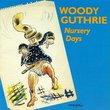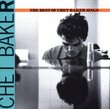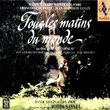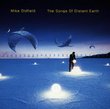| All Artists: Heitor Villa-Lobos, Carl St. Clair, SWR Stuttgart Radio Symphony Orchestra Title: Villa-Lobos: Symphony No. 2; New York Skyline Melody Members Wishing: 0 Total Copies: 0 Label: Cpo Records Original Release Date: 1/1/2007 Re-Release Date: 3/27/2007 Genre: Classical Styles: Historical Periods, Modern, 20th, & 21st Century, Symphonies Number of Discs: 1 SwapaCD Credits: 1 UPC: 761203978526 |
Search - Heitor Villa-Lobos, Carl St. Clair, SWR Stuttgart Radio Symphony Orchestra :: Villa-Lobos: Symphony No. 2; New York Skyline Melody
 | Heitor Villa-Lobos, Carl St. Clair, SWR Stuttgart Radio Symphony Orchestra Villa-Lobos: Symphony No. 2; New York Skyline Melody Genre: Classical ADIO-SINFONIEORCHESTER STUTTGA |
Larger Image |
CD DetailsSynopsis
Product Description ADIO-SINFONIEORCHESTER STUTTGA Similar CDsSimilarly Requested CDs
|
CD ReviewsAnother interesting work from Villa-Lobos Russ | Richmond, VA | 06/16/2007 (4 out of 5 stars) "CPO's fascinating survey of Heitor Villa-Lobos' (1887-1959) twelve symphonies is nearly complete. Only the fifth and tenth remain to be released. Here we have the Symphony No. 2, subtitled the "Ascension" symphony. According to the booklet notes, the symphony derives its name from the composer's frame of mind during the time of the symphony's creation. I am not quite sure what that means, or how Villa-Lobos' frame of mind is reflected in this kaleidoscopic symphony, but a recurring three-note motif, ascending at each repetition, appearing throughout the symphony serves as more tangible evidence for the subtitle.
Clocking in at fifty one minutes, the symphony is a substantial, densely orchestrated, highly contrapuntal work. The eighteen minute first movement contains eight sections alone, each with its own distinct melodic material. But, Villa-Lobos' inclination towards the immense should come as no surprise to those familiar with the composer's oeuvre. As with Villa-Lobos' other symphonies, there are moments I love, but there are also moments I don't quite follow. But I really don't have any reservations about the melodically lush and highly varied first movement. In fact, this movement definitely ranks among my favorite Villa-Lobos' compositions. The material here is highly lyrical, especially the alluring, exotically-tinged central theme. Also, the movement's densely orchestrated and slightly ominous final section is especially exhilarating. In my opinion, the symphony's remaining three movements pale in comparison to the first. The second movement contains some charming moments, but is somewhat forgettable. The third movement begins with a lovely, languishing melody, of the type for which Villa-Lobos is known; although, this theme is never fully developed. The finale is a bit too amorphous for my tastes (especially for inclusion in a symphony). In this movement, the music alternates between propulsive fragments that never seem to take off, and a series of swampy interludes that bog the music down. However, the symphony does contain a satisfyingly magniloquent coda dominated by powerful low brass and madcap violin playing (the later being a Villa-Lobos calling card). In the symphony's final measures, the violins push the music ahead through the repetition of a three-note phrase, while the French horns steadily climb from their lower register up into the stratosphere (remember - this is the "Ascension" symphony). The work concludes with two thunderous, fortissimo chords, in which Villa-Lobos seems to proclaim: "Yes, this is the end!" This release also contains a three-minute orchestral work based on the skyline of New York City. That is, the melodic intervals here are intended to represent the differences between the roofs of various skyscrapers dominating the skyline of New York. I suppose it is not surprising that the melody (the term is used loosely here) is quite forgettable, but it is an interesting idea, nonetheless. If you are collecting this series, this excellently performed and recorded release is highly recommended by this reviewer, especially for the symphony's first movement. My overall rating here is somewhere between four and five stars. I probably could have been swayed to a five star rating if I found the inner movements of the symphony to be just a bit more interesting. If you have yet to encounter a Villa-Lobos symphony, I would recommend starting with Villa-Lobos: Symphonies Nos. 6 & 8 - although any of CPO's Villa-Lobos releases are fantastic. If you are new to Villa-Lobos altogether, I would start with the highly varied Villa-Lobos: Bachianas Brasileiras (Complete). TT: 54:08" |

![Country Mountain Tributes: The Songs of James Taylor [Country Mountain Music Series ]](https://nationalbookswap.com/cd//m/22/7622/1407622.jpg)






![Seussical [2000 Original Broadway Cast]](https://nationalbookswap.com/cd//m/02/4802/514802.jpg)



